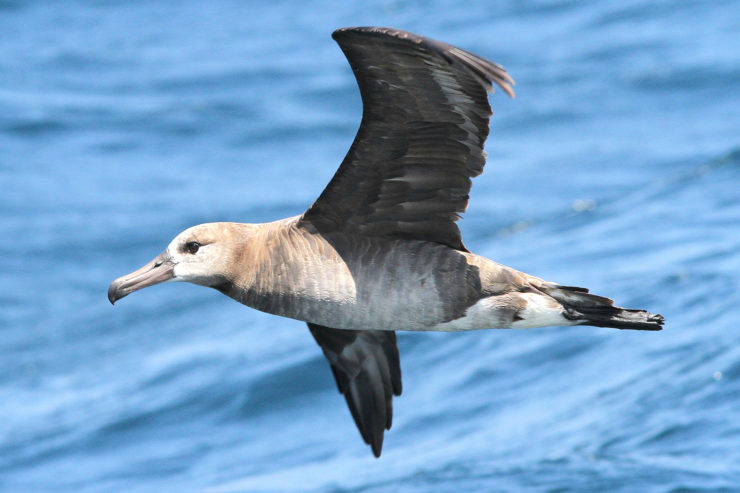In 2020, our team began a collaboration with H. T. Harvey & Associates to understand seabird vulnerability to offshore wind within the marine waters off Southern California to Central Oregon.
- H. T. Harvey & Associates led an effort to understand where seabirds have been observed, based on decades of existing data, and how those recorded species typically behave within the vertical air column in response to wind speed.
- Simultaneously, the Schatz Center team analyzed wind speeds and associated power generation potential across the region – and then integrated the bird vulnerability framework with the wind power generation model.
Our goal was to illuminate potential tradeoffs between collision vulnerability and offshore wind power generation, and to understand the likelihood of a given species to be within the strike-vulnerable zone of a rotating wind turbine. (Note: just as crossing a street is not equivalent to being hit by a car, assessing which birds may fly at heights within the rotor-swept zone of a wind turbine does not predict a number of strikes, but instead highlights a potential vulnerability for birds of that species. Future studies will examine seabird avoidance and attraction behaviors in response to turbine infrastructure.)
For large floating offshore wind turbines such as those proposed for development along California’s Outer Continental Shelf, the base of the rotor-swept zone would be at least 25 meters above sea level. Our study uses a more conservative measure starting at 10 meters above sea level, which aligns with existing observational data. Our results indicate that for 44 species of seabirds found across the study area – from Point Conception, CA to Newport, OR – most are predicted to fly below 10 meters, with approximately 8% of the seabird community flying at or above 10 meters at any given time. These higher-flyers are dominated numerically by the seasonally abundant sooty shearwater, a dynamic-soaring species that uses high wind speeds to obtain high flight heights and soar for long distances, as well as several gull species.
Our assessments encompassed all waters in the study area that are shallow enough to support floating OSW mooring infrastructure (1,300 meters or shallower). While multiple wind facility scenarios across a broad area of the West Coast were simulated for this report, the same framework can be utilized in the future to focus on new lease areas and other probable project locations as those become better refined.
For more information, contact:
- Eli Wallach, Schatz Energy Research Center, schatzenergy@humboldt.edu
- Sharon Kramer, H. T. Harvey & Associates, skramer@harveyecology.com
Download the reports:
- Final report: Seabirds in 3D: A Framework to Evaluate Collision Vulnerability with Future Offshore Wind Developments
- Interim Project Report 1: Estimating Collision Vulnerability of the Seabird Community Across a Segment of the California Current System
- Interim project report 2: Assessing Tradeoffs between Seabird Density at Collision Risk Height and Wind Facility Performance
Funding:
This research was funded by the California Energy Commission’s EPIC program. Learn more about EPIC.
















